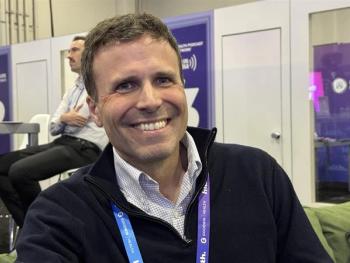
Will Digital Tools Improve LGBTQ Health?
A landmark study by the Trevor Project provides crucial guidance.
“Tragically, suicide feels like a presence in my social community that is not distant or infrequent. I don’t know if it’s the same way for people in straight and cisgender communities.” — a transgender respondent to research from Julie Cerel, Ph.D.
The development of digital suicide prevention tools has not kept pace with the uptick of social media usage, particularly to support mental health initiatives for teens within LGBTQ communities. This widens the gap between digital health need or opportunity and what’s actually being done within the digital sphere to improve mental health. This year, the Trevor Project released an inaugural survey on LGBTQ Youth Mental Health. Suicide rates among youth increased 60% from 2009 to 2017, and
Social media is a space where people share extremely personal information in a visible platform, and they are frequently subject to verbal aggression from strangers. The layer of physical separation that digital and online tools create allows for lowered perceived barriers; in short, our boundaries are lowered. In an increasingly connected world, youth have to deal with bullying as one of the many adverse impacts of screen time. According to the Pew research, youth are using YouTube, Instagram and Snapchat, with 95% of teens reporting that they have access to a smartphone. Rates of teens using the internet and social media have gone up precipitously in the last decade.
The long-term impact of social media on teens is not yet clear. However, as technology advances, healthcare providers should leverage teens’ inclination towards digital interaction to improve the availability of mental health support.
Here are five results from
- Minority youth are more at risk when they are unable to connect with like peers. Two out of three LGBTQ youth reported that someone tried to convince them to change their sexual orientation or gender identity, with youth who have undergone conversion therapy more than twice as likely to attempt suicide as those who have not.
- Ninety-eight percent said a “safe space” social networking site for LGBTQ youth would be valuable to them. With so many young people online, LGBTQ youth can more easily connect and find peers through media.
- More than half of transgender and non-binary youth have seriously considered suicide. Teen suicide rates are increasing across the U.S. The prevalence of suicide and suicidal ideation means that suicide has affected many transgender and non-binary youth. According to Cerel, Ph.D., prominent suicide prevention researcher and the past president of the American association of Suicidology, some teens report that the loss of a friend has increased their own propensity for suicidal thoughts: “The loss of these people made me feel like ending my life,” one teen told her.
- Youth indicated a strong preference for reaching out digitally when in crisis. (Some 76% of youth reported that they were extremely likely to use a digital tool.) We care about this as a potential area for digital health innovation. Having a tool that is tailored to the needs of LGBTQ youth is important for suicide prevention to be effective, and the need is huge.
- Seventy-eight percent of transgender and non-binary youth reported being subjected to discrimination due to their gender identity, and 70% of LGBTQ youth reported discrimination due to their sexual orientation.
LGBTQ innovation for health — and especially through digital health — is necessary. The gap in creation could mirror the disparity in product investment faced regularly by LGBTQ founders. Funding for digital investment in this space has
When I spoke to Cerel, she pointed to her team’s findings with trans adults. In their survey of 2,784 self-identified transgender adults, 57.91% reported that they feel close to at least one person who attempted suicide but did not die. Of those, almost half stated that the person who had attempted suicide was transgender (n=743, 46.1%), 25% reported that they feel close to at least one person who died by suicide, and almost a quarter of those suicides were losses of another transgender person (n=172; 23.6%).
According to Cerel, “Digital tools are essential, especially for LGBTQ teens who might not have other ways of reaching out to others who might understand them.” She asserts that it’s imperative to develop more digital health support and tools to create positive social media options.
Apps like
If you or anyone you know is experiencing suicidal thoughts or depression, the following resources are available:
National Suicide Prevention Lifeline (800-273-8255): Speak with someone who will provide free and confidential support 24 hours a day, seven days a week. To
The Trevor Project (1-866-488-7386): A 24/7 resource for LGBT youth struggling with a crisis or suicidal thoughts. The line is staffed by trained counselors.
Get the best insights in digital health
Related







































